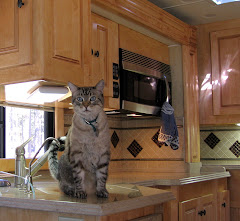The National Railroad Museum, in Green Bay, Wisconsin is located on the west bank of the Fox River, which flows from Lake Winnebago into Lake Michigan via Sturgeon Bay. The idea of a National Railroad Museum began in 1956, when local individuals broached the concept of a national museum dedicated to the American railroad history. It took two years before Congress recognized the museum officially as The National Railroad Museum.
Today, the National Railroad Museum consists of the Lenfestey Center, a 26,000 sq. ft. exhibit hall & home to Eisenhower’s WW II command train, the Pennsylvania GG-1 electric locomotive and 70+ locomotives & railcars.
Today, the National Railroad Museum consists of the Lenfestey Center, a 26,000 sq. ft. exhibit hall & home to Eisenhower’s WW II command train, the Pennsylvania GG-1 electric locomotive and 70+ locomotives & railcars.
Entering the building, front & center is a miniature protected by glass of one of the locomotives at the site where the golden spike was driven when they laid the last rail of the first transcontinental railroad from Saint Louis to San Francisco.
Walking further into the entrance looking up is a series of what the railroads call drum heads, or railroad logos. These are quite fascinating & were used primarily for passenger travel.
Drum Head of Chicago Vancouver line
Display explaining their origin

The collections consists of over 40 drug heads
To protect these treasures from weather, inside the museum there are a variety of specialty locomotives, one of which is the General Dwight D. Eisenhower’s World War II command train.
This is a fine example of a Pullman car, used in the 1920s through 1950s as a standard car for extended travel.
This locomotive is an example of special purpose locomotives. It is a workhorse for short run level terrain passenger & freight travel.
The need for more powerful locomotives was met by the Big Boy, used for longer runs in mountainous area capable of pulling 100 or more freight cars. Only 25 or these locomotives were ever built, and this is one of only 3 existing locomotives. It is about 125’ long, weighed slightly over one million pounds and produced 6,500 horsepower. This is one monster locomotive! In order to maneuver mountain curves, the engine had to be articulated. Due to extreme heat & soot, the engineer had to wear a wet bandana around his face for protection. Even in the winter, temperatures of 130 degrees or more inside this locomotive was not uncommon. Due to these conditions, & the resultant lack of visibility, the engineer memorized the position of the controls so he could find them by feel.
In an open shed outside, additional locomotives & rail cars were displayed.
This small locomotive was used in mountainous terrain to haul ore to the main hub where many turns existed.
This is an example of the silver dome observation car used especially in the west so passengers could take advantage of the scenery.
Next is a typical club car used for socializing.
The following are examples of washstands, the galley, and a parlor car used for sleeping. As you go through each display, there are flat-screened TVs which tell the story of what train travel is about. This compartment showcased the life of a porter & the difficulties of the profession and the struggles they had to overcome.
In this era, all porters were African American’s. They were at the mercy of both the railroad barons & the Pinkerton Detective Agency. It was not an easy life, but was still considered a good job at the time.
A galley
As a final attraction to the visitor, you may enjoy a train ride in an old car twice around the facility, about one mile. This gives you a feel of what the railroad cars of the 1930s – 1950s were like.
The last attraction is an 85’ observation tower to enjoy an overview of the facility, the Green Bay Packers stadium, the Heritage Museum directly across the Fox River, and the maximum security prison on the other side of the freeway. No, I didn’t tour the prison!






























No comments:
Post a Comment